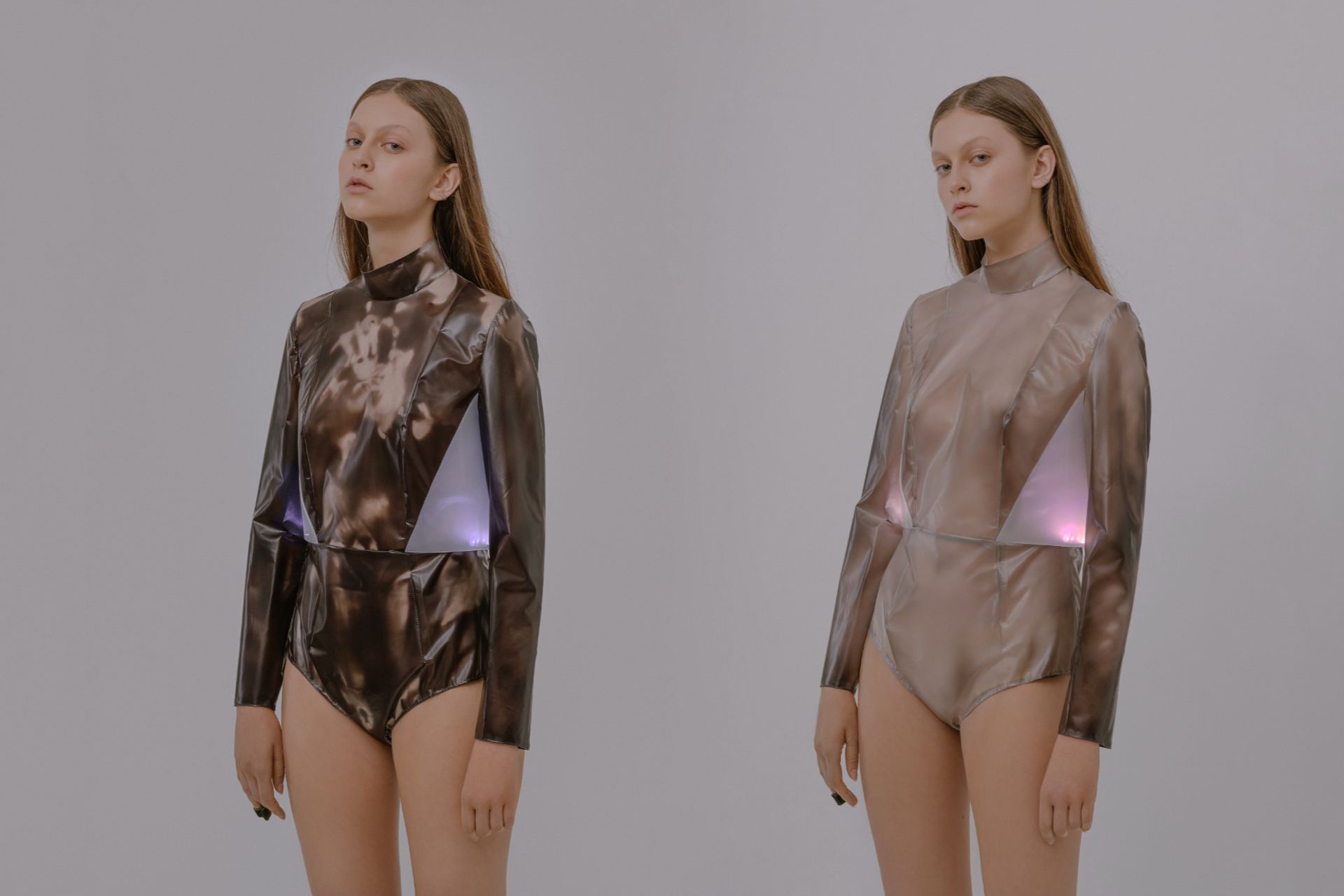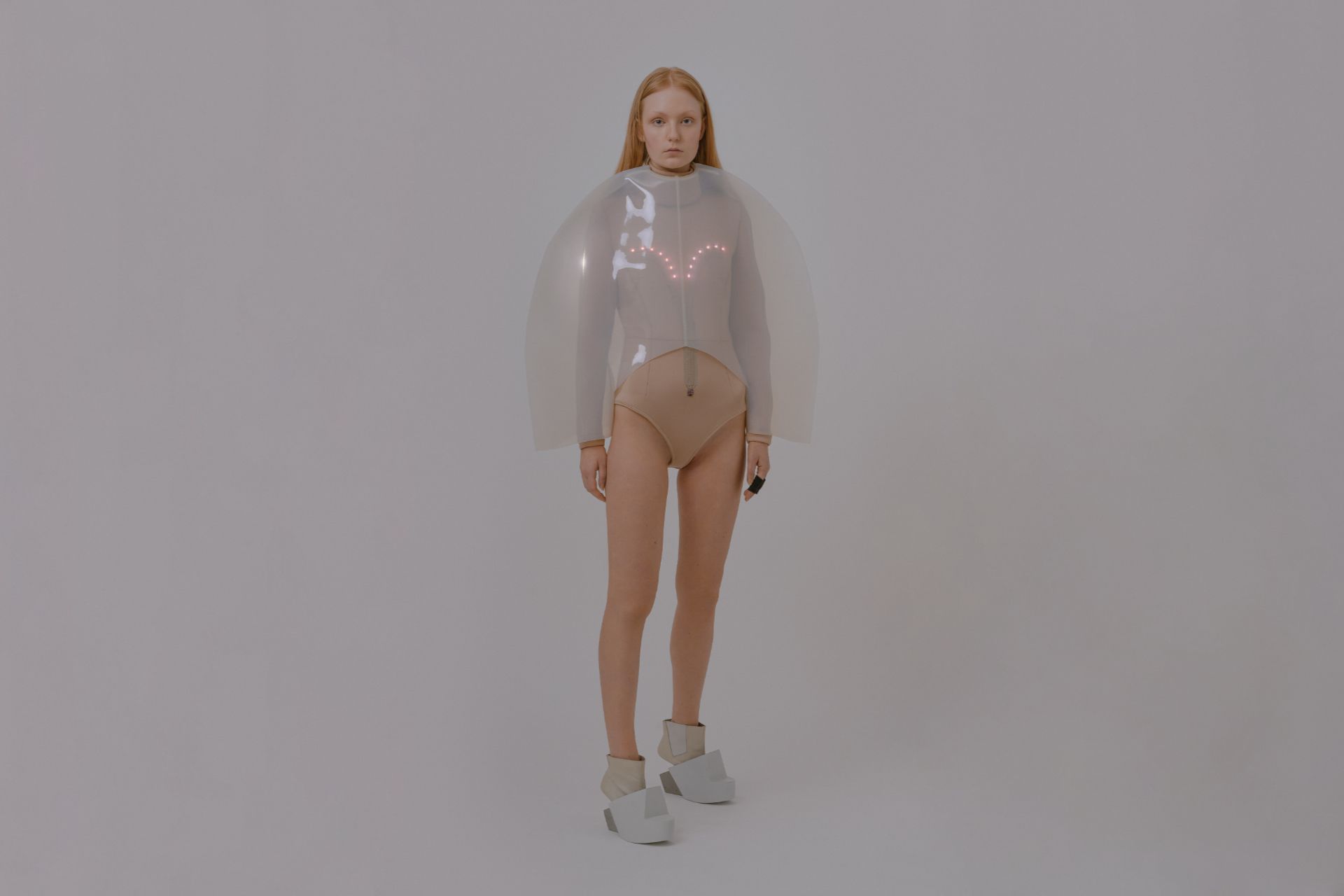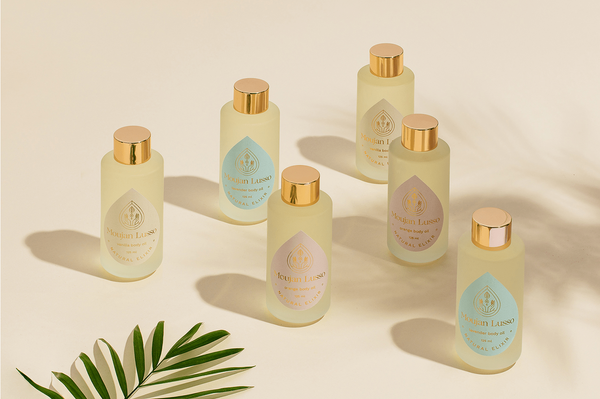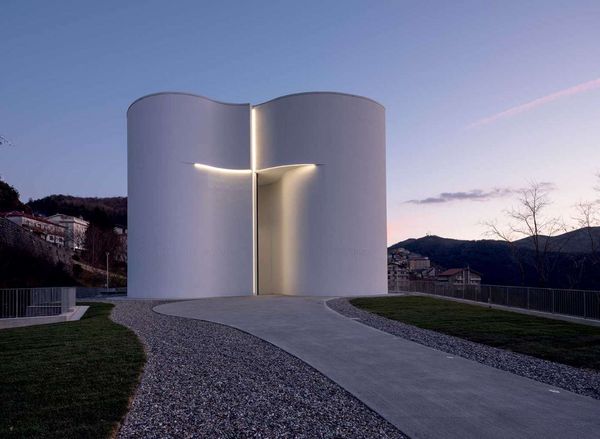“I can’t feel a thing, I keep looking at my mood ring”—sings Lorde in her song “Mood Ring”, released earlier this year, in which she wraps in satire the criticism of today’s wellness culture. In retrospect, it’s ridiculous that in the 2000s we seriously thought—at least until the first use—that a ring that changed color with heat could tell us whether we were in a good mood or not. Although Iga Węglińska’s new pieces are devoid of magic and based on serious research, yet we can expect a similar mechanism of action: the Polish designer has designed two tops that change their appearance according to our current physiological state. We asked the designer about the Emotional Clothing prototypes.
Textiles connect people with their environment—an interface that communicates without words. With the rise of tech fashion, it is finding ever more futuristic ways to enhance the human body and push its boundaries. The exploration of the intersection of textiles and technology is also a concern for designers in Central and Eastern Europe: in Hungary, we need only think of the EJTECH duo, who are looking for the intersection of sound, space and textiles, or Zsófia Lévai, who designs soft interfaces, but there are also some very exciting tech textile designers in other countries of the region. One example is Iga Węglińska, a Polish pioneer of new technologies in fashion and design who explores the experience of dressing and new ways of sensing. She mostly creates conceptual works that show the future roles of fashion and alternative ways of designing and producing. For example, she has already designed open source jumpers, shoes and rings that we can easily make ourselves, even by reusing materials found at home, following the instructions.

Besides her practice and research work, Iga Węglińska also runs the Fashion Design Studio at the Academy of Art in Szczecin. She often encourages her students to produce their work without sewing machines, using new technologies such as 3D printing, laser cutting or CNC milling. She says that young designers are often timid at the beginning, but stepping out of their comfort zone usually results in products that students are keen to develop further. As in her teaching, the Polish designer often combines classical materials and methods of object creation with 3D printing, CNC milling and laser cutting in her practice (her wabi-sabi inspired women’s shoe range is an excellent example).
The designer’s latest project is her master thesis for her Ph.D., Emotional Clothing. How can the spectrum of dressing experiences be broadened? What role can smart textiles play in this? She devoted her doctoral research to these questions, working with chemists, neuroscientists, programmers and other disciplines to get closer to the answers. The results of this research are condensed in Emotional Clothing’s polysensory outerwear prototypes, which detect physiological changes in the human body and change their appearance based on these changes. The garments are made using special materials and conductive fibers to expand the wearer’s perception.


One of the tops detects body heat, the fluctuations of which turn the material from black to transparent. It also monitors the heartbeat and sends visual signals to the rhythm of the heartbeat, which pulsates and changes hue at the same rate.
The other garment monitors the galvanic skin response, that is, the activity of the human sweat glands and the resulting stress level, while LED light built in the suit changes on a cold-hot scale depending on this. According to the concept, a visual indication of elevated stress levels helps to identify the problem, which is the first step to the wearer taking a deep breath and trying to relax.
“I like to refer to Emotional Clothing pieces as ‘sensory prosthetics’, which essentially become extensions of the body by responding to biological changes. In a sense, they replace our senses. They stimulate a ’sense of participation’, which I think can be identified with a state of mindfulness. It invites us to focus more on our bodies,” says Iga.
Iga Węglińska did not design the prototypes for streetwear but for a more intimate setting—where no one can see us, and we can train ourselves to achieve a more balanced, relaxed state. However, the speculative nature of the pieces means that we can’t help but think about the possible future uses of the technology. In public use, what are the advantages and disadvantages of being able to see changes in our heart rate and increases in our stress levels? Will it make us vulnerable, or could it save lives if our environment receives a clear signal that our heart rate has spiked when an unexpected health problem occurs?
Fully aware of the dangers of biometric data misuse, the designer is also rather positive about the future potential of Emotional Clothing technology:
“Materials can be used to inform us about our environment, or to inform the people around us about something we want them to know about. The good news is that the materials’ input and output signals can be easily changed for a different one, which gives almost unlimited options to adapt. It means that not all the feedback has to be visible—think of haptic cues, or the warming of the inner layer, for example, which no one can see but we can feel. Clothing can react to a stimulus that is out of reach for a human sense! This can support us or improve our human capabilities,” says Iga, adding that the results of Emotional Clothing can be used not only in the clothing of the future but also in medicine, the military and sports.
Photos: Mila Łapko
Iga Węglińska | Web | Facebook | Instagram

Like a local Xmas—Christmas programs for foodies

The Romanian brand Moujan Lusso conquers with a sophisticated identity | Alexandra Necula










